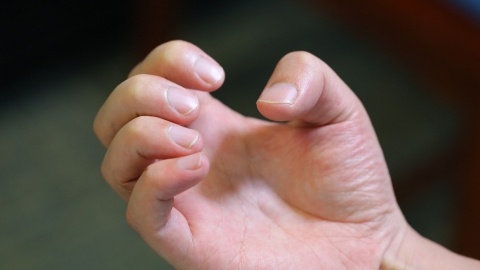How to determine the cause of upper limb weakness
Generally, the cause of upper limb weakness can be evaluated by considering the duration of symptoms, associated symptoms, pattern of onset, triggering factors, and whether the weakness is unilateral or bilateral. Possible causes include overexertion, cervical spondylosis, cerebral ischemia, hypokalemia, and myasthenia gravis. If symptoms recur or worsen, it is recommended to seek timely medical evaluation at a正规 hospital. The specific analysis is as follows:
1. Duration of Symptoms
Physiological weakness is often caused by excessive exercise and usually improves after 1–2 days of rest. If upper limb weakness persists for more than three days without improvement, it may indicate a pathological condition. For example, weakness caused by nerve compression due to cervical spondylosis tends to persist. It is important to record the onset time of weakness to avoid delays and promptly undergo imaging examinations such as cervical X-ray or CT scan for evaluation.

2. Associated Symptoms
Physiological weakness typically does not involve other discomforts. If numbness, pain, dizziness, or muscle atrophy accompany the weakness, a pathological cause should be suspected. For instance, cerebral ischemia may present with dizziness and limb numbness, while hypokalemia may be accompanied by lower limb weakness and palpitations. Targeted tests such as complete blood count and electrolyte panel should be performed based on associated symptoms.
3. Pattern of Onset
Episodic weakness related to physical exertion is often physiological. However, frequent episodes (more than twice per week) or sudden onset may suggest a pathological origin. For example, myasthenia gravis typically presents with upper limb weakness that worsens in the evening after being mild in the morning. Diagnosis can be confirmed via the edrophonium (Tensilon) test. After diagnosis, medications such as pyridostigmine bromide tablets, methylprednisolone tablets, and azathioprine tablets may be used under medical supervision to alleviate symptoms.
4. Triggering Factors
Physiological weakness is commonly triggered by lifting heavy objects or intense physical activity and resolves with rest. If weakness occurs without clear triggers or is induced by actions such as neck flexion or exposure to cold, a pathological cause should be considered. For example, cervical spondylosis often worsens with prolonged neck flexion. Postural adjustments are recommended, along with avoiding prolonged head-down positions. Cervical traction may be helpful when necessary, and in severe cases, anterior cervical discectomy and fusion surgery may be required.
5. Unilateral vs. Bilateral Presentation
Bilateral symmetric weakness may be seen in conditions such as hypokalemia or myasthenia gravis. Unilateral weakness raises concerns for cerebral ischemia or nerve compression. For example, cerebral ischemia often causes unilateral weakness accompanied by dizziness. Under medical guidance, antiplatelet agents such as enteric-coated aspirin, ginkgo leaf extract tablets, and clopidogrel hydrogen sulfate may be prescribed to improve cerebral circulation.
In daily life, avoid overexertion and reasonably schedule upper limb activities. Maintain proper sitting posture to reduce strain on the cervical spine. Have regular health checkups to monitor electrolytes, blood pressure, and other key indicators. When upper limb weakness occurs, document relevant details to facilitate accurate description during medical consultations. Seek early evaluation from orthopedics or neurology specialists to prevent delayed diagnosis and treatment.




